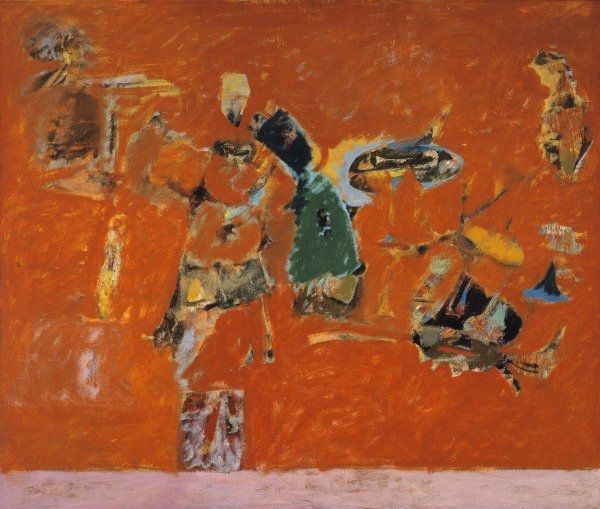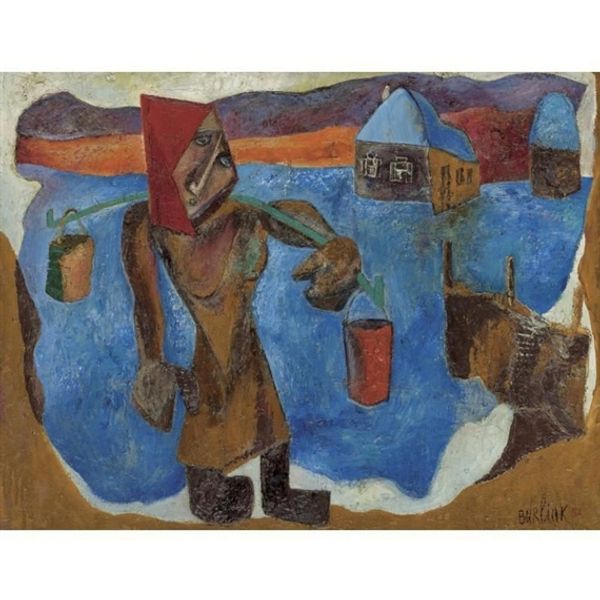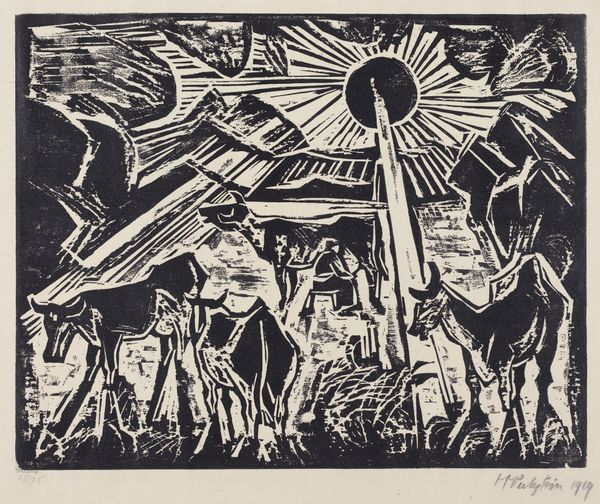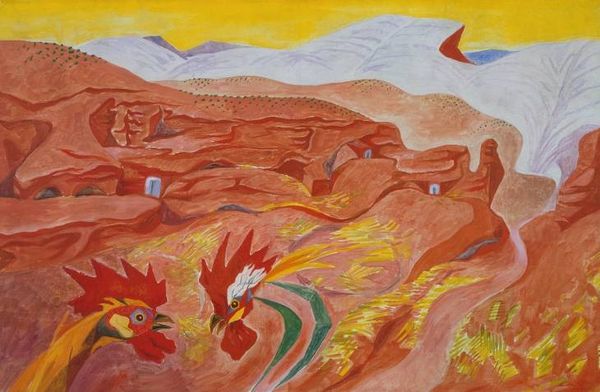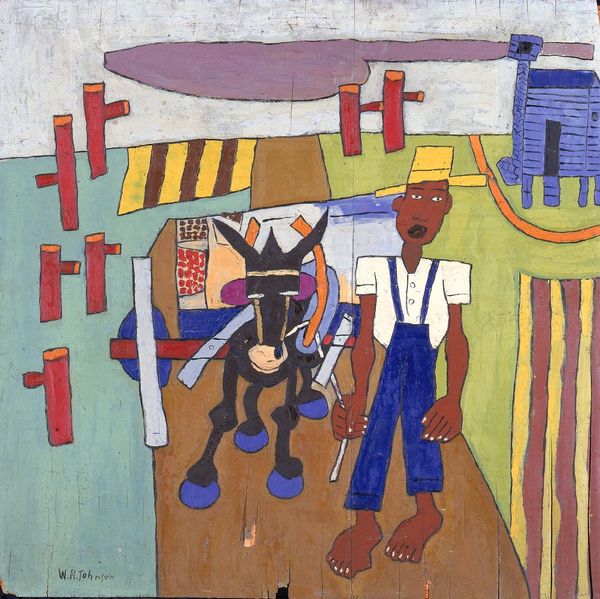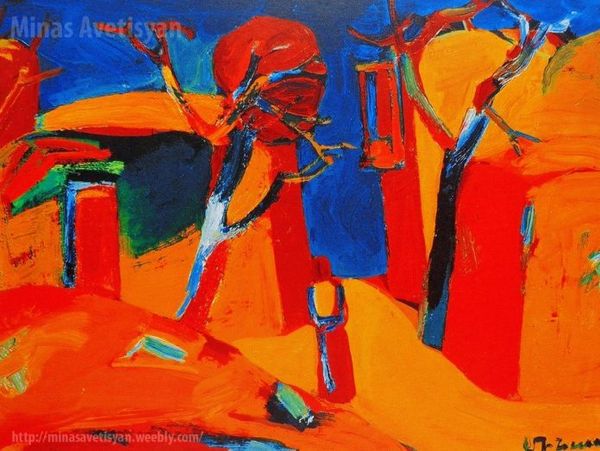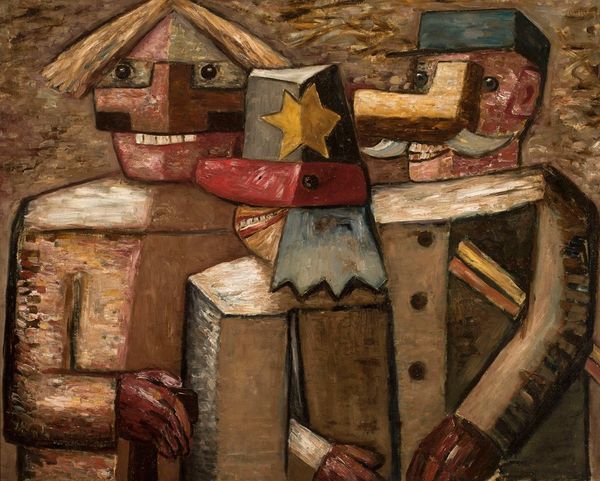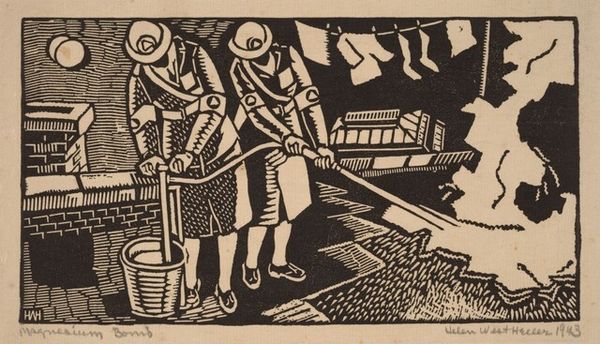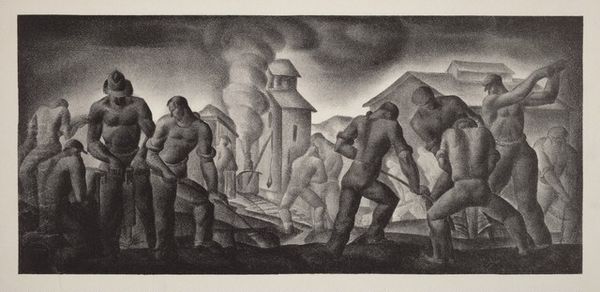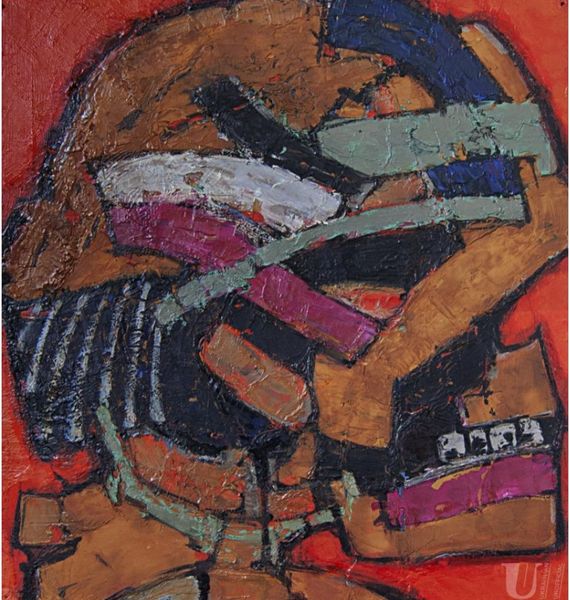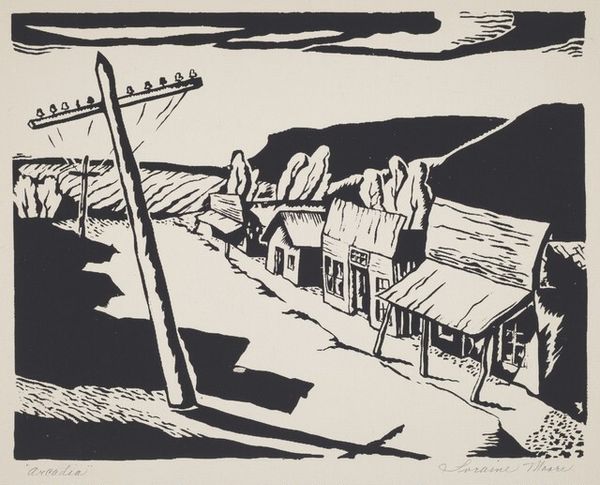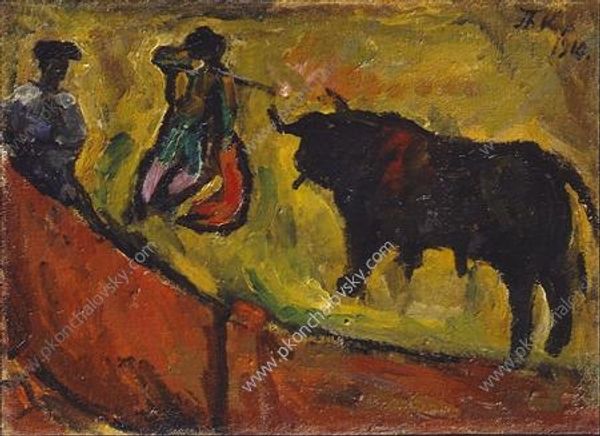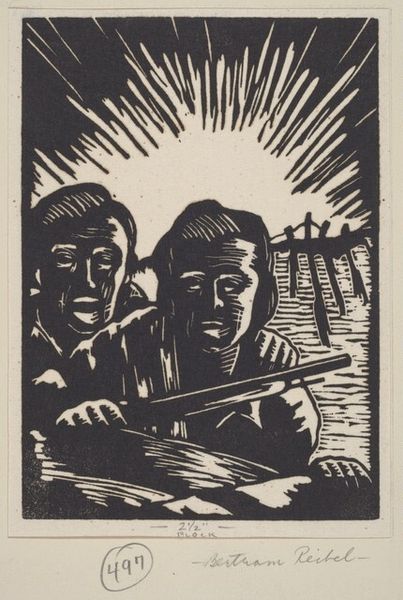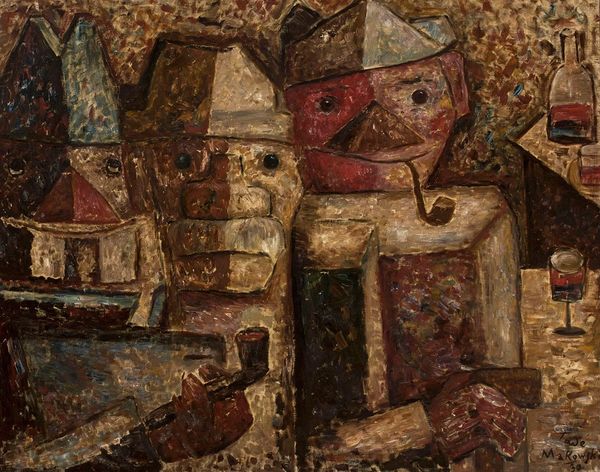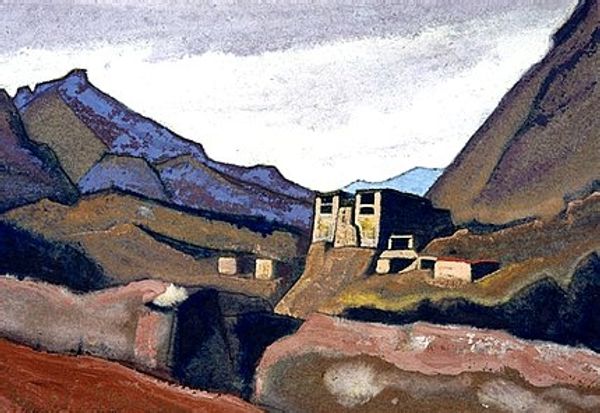
#
acrylic
#
abstract painting
#
painted
#
possibly oil pastel
#
oil painting
#
acrylic on canvas
#
street graffiti
#
underpainting
#
painting painterly
#
watercolor
Copyright: Public domain
Editor: So here we have Horace Pippin's 'The Whipping,' painted in 1941. There's a rawness to it, a starkness that hits you right away. The composition is so direct, almost primitive in a way. What leaps out at you when you look at this piece? Curator: Primitive, yes, in the best possible sense. Pippin cuts to the bone, doesn't he? I see a brutal moment, but rendered with an almost childlike clarity. Notice how the figures are defined by strong, unwavering outlines. It reminds me a bit of folk art traditions, of storytellers using images to convey narratives directly. And consider the palette – it's earthy, but there are jolts of harsher colour. Editor: Right, that stark contrast! The sky feels almost serene, even with everything happening below. It creates this really unsettling feeling, like a calm indifference to the violence. Do you think Pippin was deliberately using that juxtaposition? Curator: I suspect so. Pippin experienced considerable suffering himself – injured in WWI, and dealing with racial prejudice throughout his life. Perhaps that stark juxtaposition you observed is meant to convey a profound truth: life's beauty exists even, perhaps especially, in proximity to unimaginable cruelty. Consider the log cabin as well. Is it a source of security? Is it a trap? Editor: That makes the piece so much more complex. What first appears simple suddenly becomes heavy with layers of meaning, his war experience infusing this moment of violence with a far deeper history. Thanks, I am learning so much! Curator: And I in return. Art reminds us not of all that we have figured out, but what remains to be discovered.
Comments
No comments
Be the first to comment and join the conversation on the ultimate creative platform.
